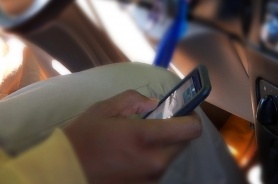How to Make your Car Smart
Lots of people we know now own these new devices called Fitbits – little wearable computers that track how much activity they do, how they sleep,...
There’s something creepy or unnerving to the average person when they think about “self-driving cars” tooling around our streets. The fact that there’s not a person behind the wheel controlling where the car is going just seems wrong to some people. But this is really just the beginning. Analysts predict that by 2020 (just four years away), there could be as many as 10 million “driverless” cars on the road around the world.
How can a car successfully get around without a human making decisions? What's stopping it from plowing into other cars or a bridge? Well, the technological bones of a successful driverless system have been in place for a while. These autonomous vehicles rely on geolocation information from GPS satellites and ultrasonic sensors, techometers, gyroscopes and altimeters on the car itself that gave ultra-fine readings as to where the car is at and what it’s doing. In the future, these systems will also rely on communications with sensors that are actually built into the traffic infrastructure.
When consumers are surveyed about driverless vehicles, on the one hand, they marvel at the possibilities. Everyone knows about the Google Cars driving around the streets of the world, mapping the world’s highways and byways. But consumers are most concerned about a loss of control. They don’t fully trust a system that doesn’t have the ability for a human driver to take control of an autopilot system.
Fortunately, that kind of override is an essential function of every kind of driverless system made. Still, consumers aren’t 100% convinced. Maybe time will help assuage concerns.
What didn’t help was news in May of the first recorded fatality involving an autopilot system. It involved the company most on the technological cutting edge of these things – Tesla. Details of the crash, as described by Tesla’s news release later in June, revealed the crash involved a Model S Tesla vehicle, driving on a divided highway with Tesla’s new autopilot feature engaged. A tractor trailer crossed the divided highway (probably making a left turn), and neither driver saw the other. The Tesla vehicle failed to stop, no brakes were applied, and the Tesla ended up driving under the tractor trailer, crushing the front end and killing the driver.
The National Highway Traffic Safety Administration has been investigating, trying to determine if the accident was caused by a flaw in the Tesla’s software. It should have stopped. What’s also clear is that human error may have played a part. Tesla’s recommendations are that the human driver keep their hands on the wheel even when Autopilot is engaged. The deceased driver should have been able to see the other vehicle and apply the brakes, but for some reason they did not.
Since being introduced in October 2015, Tesla claims cars with its Autopilot system have logged over 130 million driving miles with the new system. There was bound to be a first accident. And so here we are.
This follows news in February 2016 of the first accident involving the most famous example of driverless vehicles, the Google Car. One of the Google Cars was involved in a (thankfully) low speed collision with a city bus in Mountain View, California on February 14th. This was the first driving accident with a Google Car after more than 1.4 million miles of driving. Thankfully, no injuries were reported.
A Google executive had to take the stage at the SXSW Festival in Austin, Texas, to explain to car and tech enthusiasts what exactly happened. The short summary is this:
And here’s where the crux comes in.
So it wasn’t a huge deal, except it highlights that driverless car programming and technology is still not absolutely flawless. Google itself has jumped into action and is in process of implementing over 3,000 different tests to try and prevent this kind of thing from happening again in the future.
Image Credit: VolvoCars.com

Lots of people we know now own these new devices called Fitbits – little wearable computers that track how much activity they do, how they sleep,...

1 min read
Weary drivers have been receiving some good news recently - gas prices continue to drop. Markets all across the country - Charlotte, San Diego,...

We’ve missed doing a blog for National Car Month the past couple of years, so here it is! National Car Month is the brainchild of the Car Care...